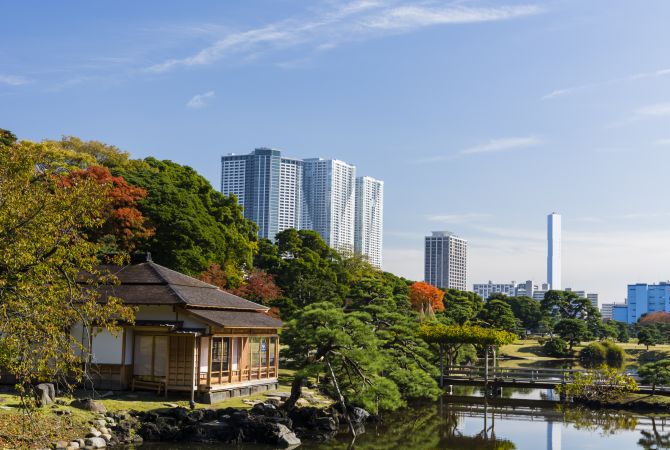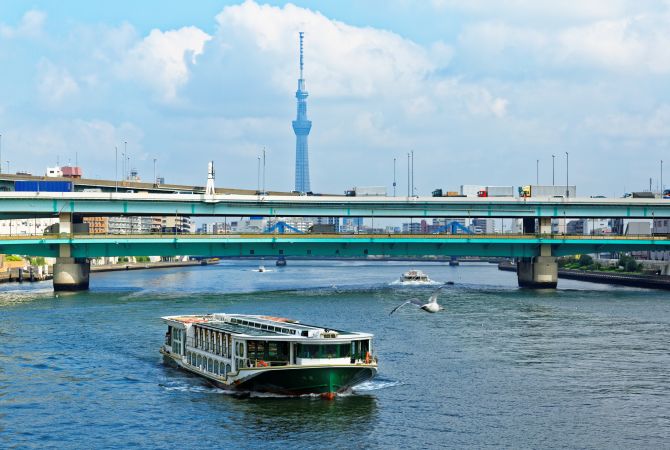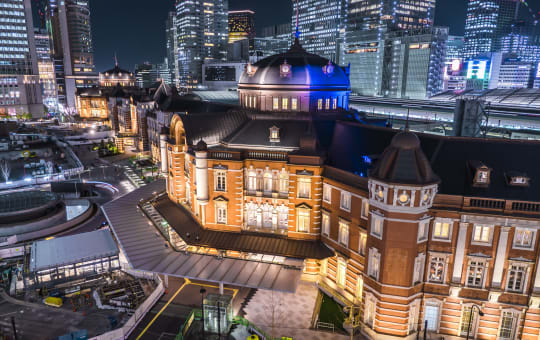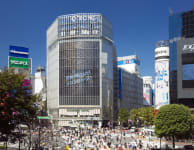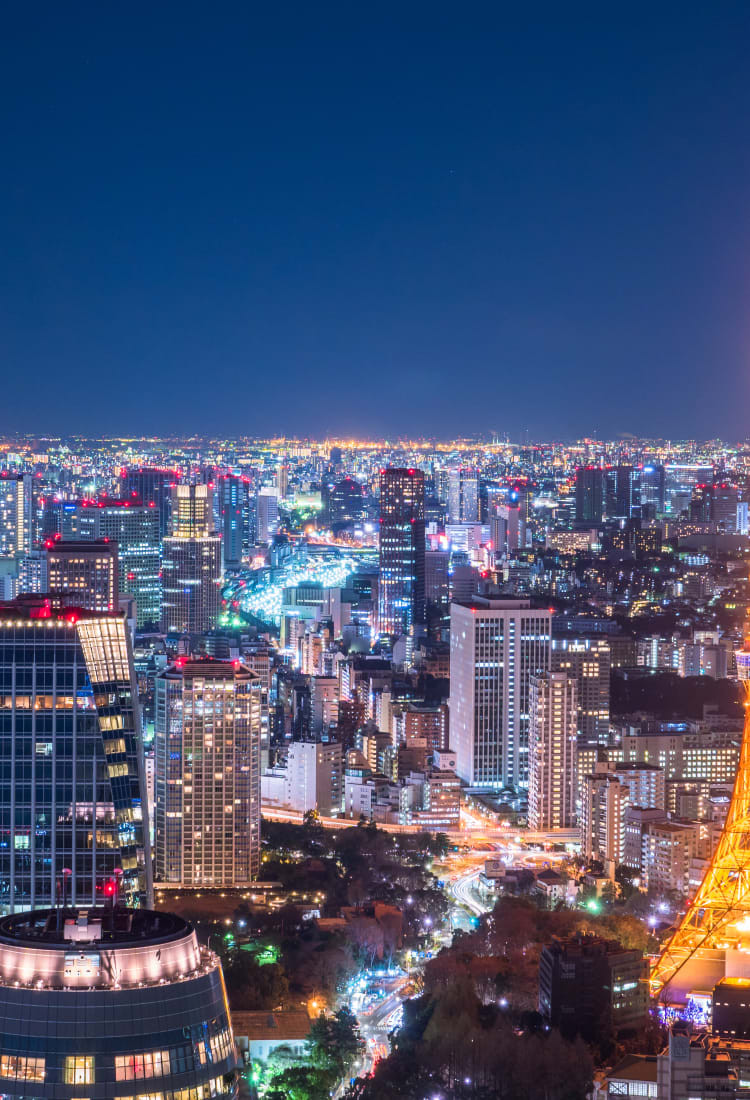

TOKYO Tokyo Tower & Around Tokyo's symbolic landmark is a hub of bright lights, rich culture and Edo era serenity
Tokyo's symbolic landmark is a hub of bright lights, rich culture and Edo era serenity
Standing at 333 meters and inspired by the Eiffel Tower, the iconic red and white Tokyo Tower is hard to miss, and a visit should be high on your to-do list during your trip to the Japanese capital.
It's impressive enough just seeing the tower up close, but the surrounding area is also full of culturally engaging places to explore. Historically significant temples, museums of modern art and technology, and even some relaxing nature all await you.
Don't Miss
- A chance to see Mt Fuji on a clear day
- A cup of tea in an oasis of mid-metropolis green
- One Piece Tower, an amusement park inside Tokyo Tower's base
How to Get There
You can access Tokyo Tower by subway and bus.
Tokyo Tower is five minutes on foot from the Toei Oedo Line's Akabanebashi Station, six minutes from the Toei Mita Line's Onarimon Station, and seven minutes from Kamiyacho Station on the Tokyo Metro Hibiya Line. Buses run through this area from many parts of the city.
Tokyo's steel giant
Tokyo Tower is visible from all around the city and is a true symbol of the capital. It was built in 1958 as Japan was becoming a major economic power. If you want a good view of the city, you can take in the breathtaking scope of the sprawling metropolis around you from the 250-meter high Top Deck or the main observatories slightly below. If you prefer to have your feet closer to the ground, explore the area until sunset and watch the tower light up in a dazzling display.
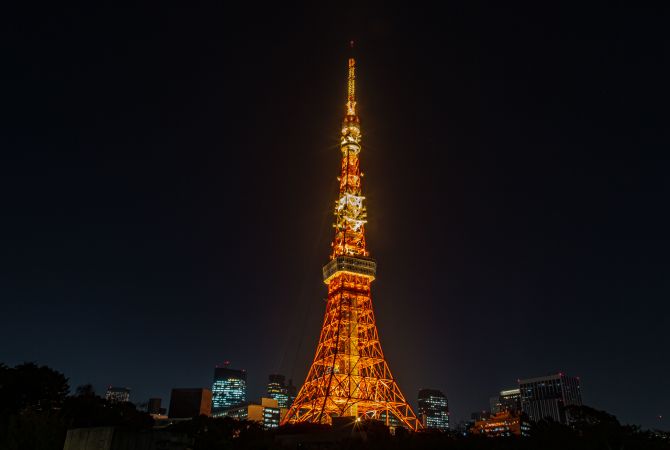
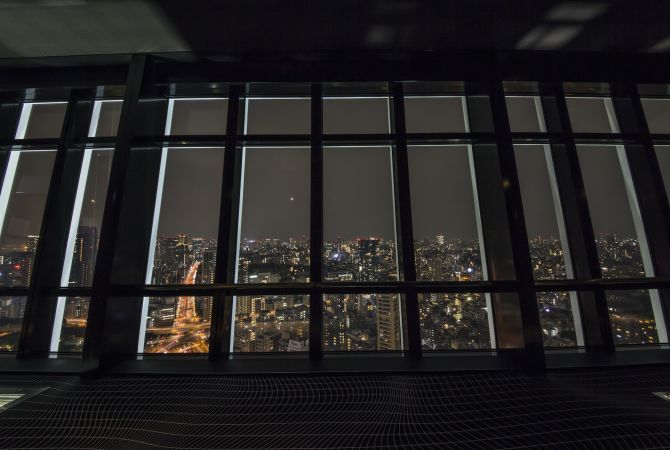
©TOKYO TOWER
The enduring temple of the Tokugawas
On the sprawling grounds of Shiba Park below Tokyo Tower is Zojoji Temple . This now-quiet temple has extreme historical importance. Tokugawa Ieyasu designated it as the Tokugawa family temple and the burial ground for a number of the 15 Tokugawa shoguns. Most of the temple's original buildings were burnt down in World War II, but the imposing front gate has withstood centuries of natural and manmade attacks and is designated an Important Cultural Property. Give yourself ample time to wander the grounds, and be sure to stop by the treasure gallery and mausoleum of past Tokugawa shoguns, as well as the museum in the lower level of the main temple building. You'll see a model of one of the lost temples which is on loan from the British Royal Family. Exploring Shiba Park will reveal a number of small shrines, temples and other memorable wonders.
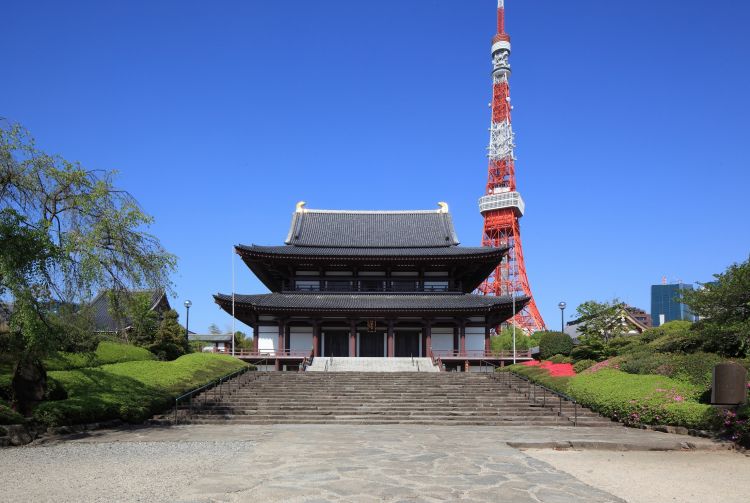
Museum hopping
If the touristy amusement park at the base of Tokyo Tower doesn't pique your interest, the area around Tokyo Tower offers many small museums providing insight into various worlds of Japanese history and business. The NHK Museum of Broadcasting takes you through the ages of radio and television, while the Ad Museum Tokyo in Shiodome highlights the history of Japanese advertising, and the Panasonic Living Showroom showcases all the necessities for modern urban living. Walking out toward Roppongi will bring you to a trio of museums featuring traditional and contemporary art: Kikuchi Kanjitsu, Sen-oku Hakukokan Tokyo (scheduled to reopen in spring 2022), and the Okura Museum of Art.


A moment of urban calm
A walk through Shiba Park and toward Hamamatsucho Station will bring you to Hamarikyu Gardens , formally known as Hamarikyu Onshi Teien. These magnificently manicured Japanese gardens offer you some Edo era calm below the imposing skyscrapers of the nearby Shiodome district. Originally they were a strolling ground for the Imperial family until being opened to the public in 1946. Have a fragrant, relaxing cup of tea in the floating teahouse and take time to unwind among the striking seasonal blooms. From Hamarikyu Gardens , you can catch the "water bus" going up the Sumida River toward Asakusa for a unique way to tour the city.
